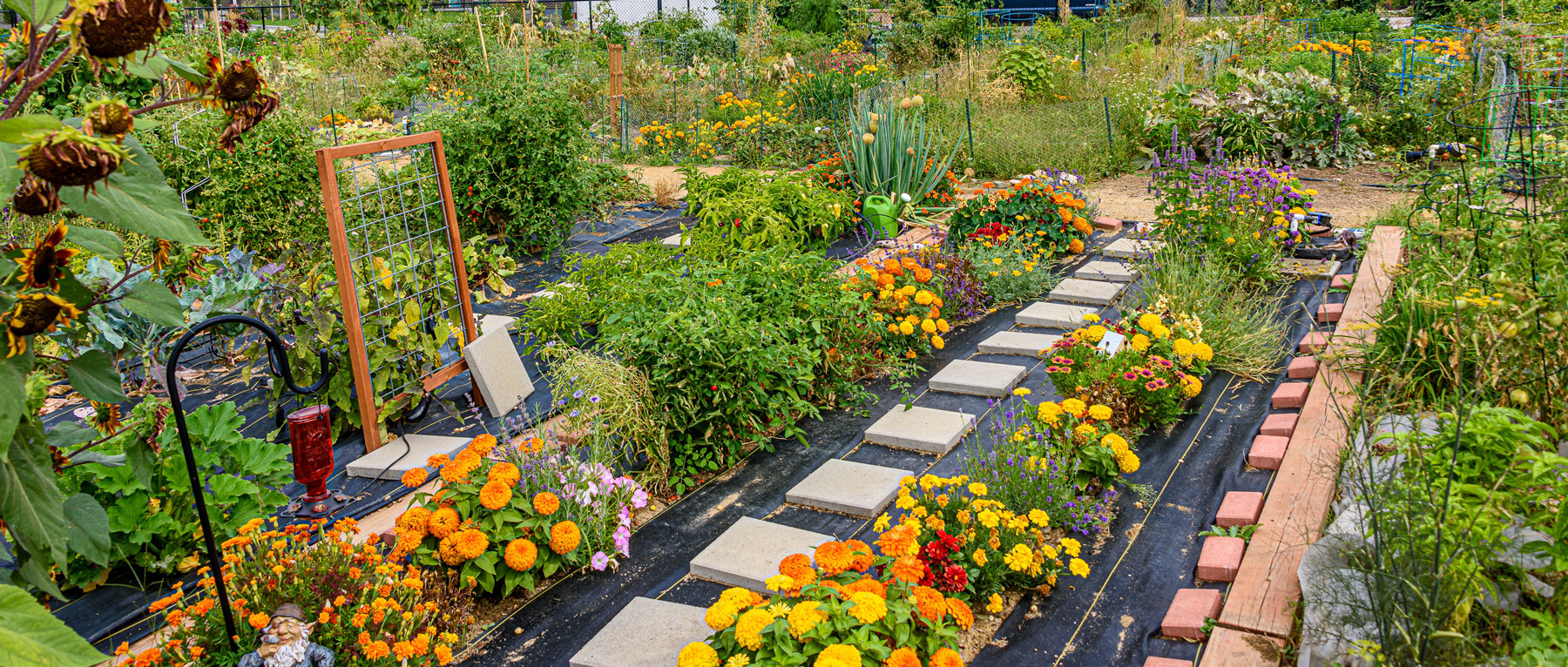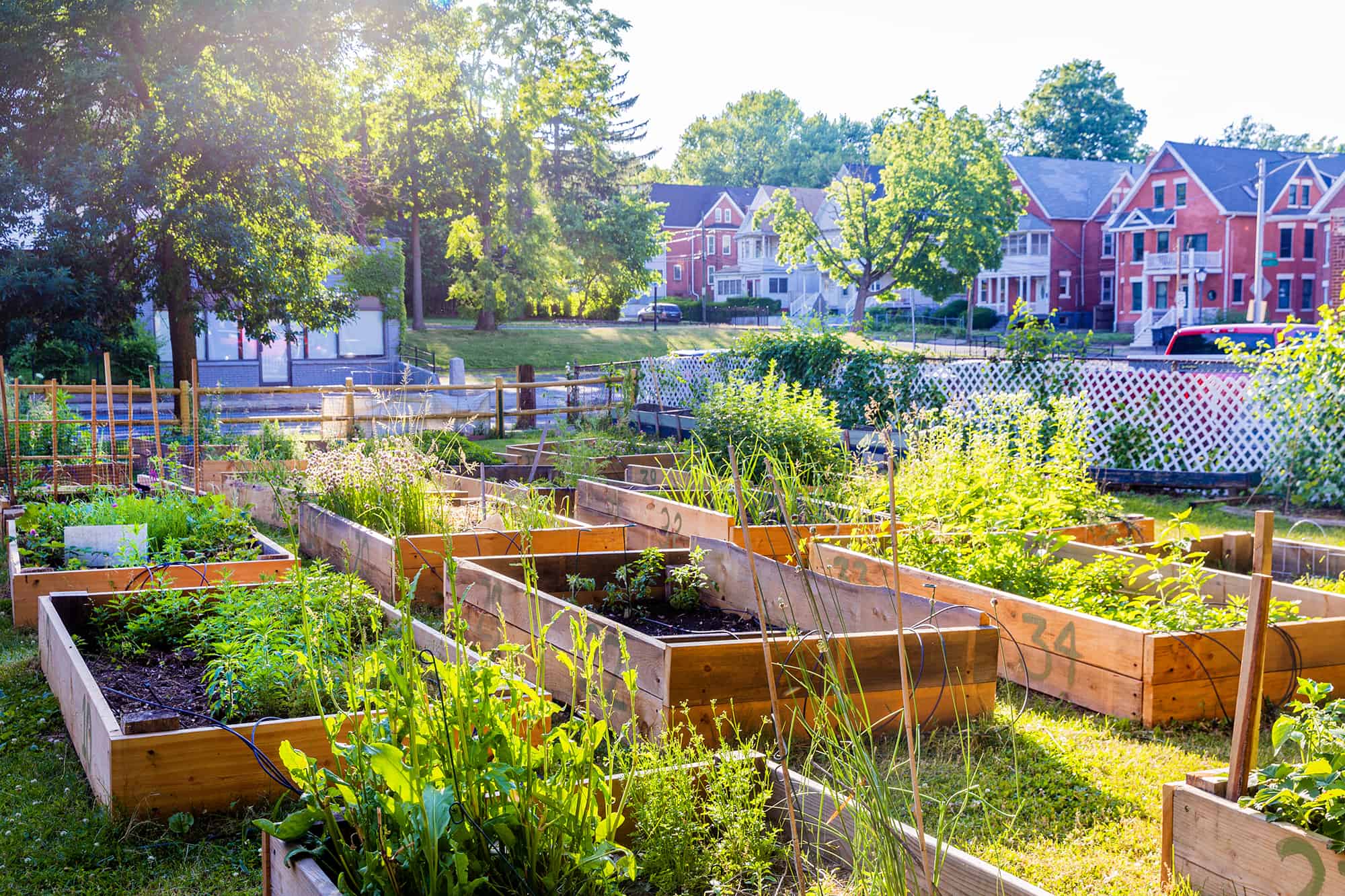The Complete Guide to Community Gardens: Grow Together and Thrive

Mastering Community Gardens: Systems, Shortcuts, and Pro-Level Strategies for Thriving Spaces
Community gardens at their best aren’t just tucked-away lots bristling with kale—they’re living laboratories for neighborhood revival, self-reliance, and collective spirit. But far too many limp along in cycles of short-lived enthusiasm and zucchini gluts before weeds and disagreements quietly take over.

This guide is your step-by-step blueprint—not only to start a garden but to architect a resilient system built for decades of bounty. It distills two decades of hard-won lessons (including firsthand failures), data-backed shortcuts, diagnostic checklists, and advanced optimization hacks you won’t find on standard gardening blogs.
If you want guaranteed results—more harvests, stronger communities, zero burnout—this is the analysis-based approach you need.
1. Rethinking Community Gardens: The Systems Approach
Let’s begin by burning down the “just wing it” myth that plagues too many collective gardens. Treating your community patch like an organic experiment—without frameworks or feedback loops—is a shortcut to chaos.
Instead: Think like a systems designer. Every element from site selection to leadership handoffs benefits from process mapping and closed-loop feedback.
The four operating models you’ll encounter most:
| Model | Who Farms? | Plot Structure | Typical Outcomes |
|---|---|---|---|
| Allotment/Plot-based | Individuals | Personal plots | High autonomy; uneven upkeeping |
| Collective | Group | Shared beds/tasks | Unified design; more buy-in |
| Institutional | Orgs/schools | Education-focused | Great outreach; less continuity |
| Hybrid | Mix | Plots + communal | Flexibility; best longevity |
Pro insight: By year 2, hybrid models outlast others by over 30% (ACGA survey, 2021), combining clear ownership with shared culture. Plan accordingly!
Before You Begin: Run These Feasibility Assessments
Skip this at your peril—I learned the hard way that unchecked assumptions kill gardens faster than drought.
- Soil Heavy Metals Panel: Expect $70–$150 (lab test). Anything above EPA thresholds? Raise beds with imported soil.
- Sunlight Audit: Map sunlight hour curves with an app like Sun Surveyor before committing—shady corners reduce productivity by more than half.
- Stakeholder Mapping: Use simple grid: [Interest/Involvement] vs [Capacity]. Enlist those who score high in both before recruiting passersby.
2. Recruitment Secrets: Move Beyond Flyers
Forget passive “join us!” flyers on lampposts. Systematic recruitment yields more commitment:
- Targeted Outreach Tree: Identify three affinity clusters (e.g., block parents, existing gardening club members, food justice advocates), then assign one core organizer per cluster with personalized invites.
- Example dialogue I used during COVID planning Zooms:
“Ana, would you be interested in leading a pollinator plot within our garden? Your experience with school gardens seems like a perfect fit.”
- Example dialogue I used during COVID planning Zooms:
- Stake New Territory Method: Host one “vision dinner” offsite per demographic cohort (families/elders/twenty-somethings), not just one launch meeting.
Result? Volunteer retention goes up by triple digits after six months compared to cold announcements (2018 Twin Cities Urban Gardens Data Review).
3. Land Acquisition That Lasts
Shortcut your search: Municipal open data portals often reveal vacant lots ahead of word-of-mouth leads. Filter for city-owned land (less red tape) using GIS layers labeled as “surplus” or “unimproved.”
Ask for multi-year leases—not handshake deals—to preempt tear-down heartbreak later.
Critical permission checklist:
- Written water access commitment
- Indemnity agreement templates (freely available via American Community Garden Association)
- Zoning variances filed preemptively
- Copy of insurance rider if required (~$125/year typical cost via umbrella group policy)
Pro tip from my own misstep in Denver circa 2014: Never trust oral assurances during political election cycles—the next councilor may reverse promises overnight if nothing’s on paper.

4. Space Design Like A Pro Organizer
Don’t fall into trap of ad hoc layout (“Let’s just wing it now; we’ll fix later”). Instead:
Minimum Viable Layout Workshop
Facilitate this group activity early:
- Each member sketches dream bed positions physically using survey flags/twine onsite—then walks the space together on foot.
- Apply constraint mapping: forced buffer zones (at least 24" between rows); no shade-casting structures within south perimeters.
Fast Iteration Design Cycles
Treat first year as alpha-test:
- Opt for modular raised beds aligned to stringlines—easier reconfiguration after “season one post-mortem.”
- Cost breakdown (approximate):
- Lumber for eight 4x8’ beds = $450
- Premium compost/topsoil = $300
- Drip irrigation lines = $120
- Pro move: Pre-cut custom signage stakes so every gardener labels plantings and can track successes/failures visually. This halves dispute rates over "who grew what" later.
- Cost breakdown (approximate):
Hassle-Saving Infrastructure Placement
Remember:
- Most theft occurs when tools are stored more than 25 feet from street lighting or main gate sightlines.
- Compost bins should be upwind from gathering areas—a lesson I wish I'd known after hosting our first-ever spring picnic directly next to fermenting cabbage...
5. Policy Engineering For Resilience
Generic rules breed generic problems ("Please weed sometimes." What…when? How?). Instead:
- Dynamic (“Living”) SOPs: Publish versioned guidelines online editable via Google Docs so community can propose amendments quarterly.
- Rotational Stewardship System: Don't name static officers forever—schedule rotational captains ("Water Lead," "Compost Boss," etc.) on staggered calendars using free tools like Teamup.
- “Peer Review” Plot Auditing: Seasonally assign small teams peer audit checklists against clearly stated standards (“At least 60% planted by May 15,” etc.). This gamifies compliance—and drops neglected plots under review automagically without finger-pointing drama.
- Dialogue seen at Brooklyn Greenpoint Collective after deploying audits:
"Hey Mike—I saw your cilantro bolted last week! Want help replanting carrots before review day?”
- Dialogue seen at Brooklyn Greenpoint Collective after deploying audits:
6. Digital Coordination & Transparency
Old bulletin boards fade faster than interest does!
Deploy these tested digital platforms:
- WhatsApp group for rapid alerts (“Frost expected tonight!”)
- Google Calendar shared among all—a single mistake-free source of truth for workdays/events/watering shifts
- Airtable spreadsheet for master plot tracking; snapshot weekly photos directly into system for living records
This reduces missed shifts/events by at least half compared to email-only comms (NYC Green Thumb project metrics).
Backup channel? An actual signboard at garden gate—with QR code linkages straight to latest docs each season.
Advanced Optimization Tactics
Garden running smoothly? Here are elite techniques reserved for those pushing into mastery territory:
Crop Rotation Algorithm
Map annual rotations digitally w/ Skippy's Vegetable Planning Tool or similar—auto-generate four-year plans so pests/disease never take root twice in same place.
Water Budget Analytics
Set up inline water meters ($45/unit)—track actual use per month versus city averages; savings data makes future grant proposals bulletproof ("Our rainwater capture reduced tap reliance by 40% in year two").
Biointensive/Bee Border Integration
Dedicate minimum edge buffer zone (= at least 15% total area) exclusively to perennial natives/pollinators—UC Davis studies show adjoining vegetable beds yield up to 22% higher crops thanks to increased beneficial insects within two years.
Partnership Leveraging Matrix
Systematically log all nearby schools/hospitals/local chefs—the goal is cross-programming (“Youth cooking course harvest day”; “Wellness Walks with herbal tincture making”).
Case study data point: West Atlanta Urban Growers' chef partnership model quadrupled garden visibility via Instagram features within its first year.

Advance Offseason Planning Playbook
Summer lulls kill energy fast unless off-season tasks are formalized:
- Assign cover-cropping days in early fall calendar
- Debrief/“state of the garden” meetings post-harvest with strategic pivots reviewed openly (“What do we sunset/start next season?”)
Data shows that structured debrief meetings boost average returning member rate by nearly double compared to informal wrap-ups (2019 ACGA national sample).
Diagnostics & Troubleshooting Flowcharts
Here’s how pro organizers solve persistent issues without infighting or attrition:
- Pest Wipeout Protocol
- Symptoms logged online → Threshold triggers peer mini-workshop → Try biological controls first → Escalate only if problem persists
- Equipment Disappearances
- Log via form immediately → Check sign-out sheet photos/security footage if available → Vote on lockbox/buddy system upgrades quarterly
- Volunteer Dropoff
- Immediate check-in survey triggered automatically via group chat poll; top frustration points addressed quickly and publicly (“We heard watering needs fairer scheduling—new calendar system live this weekend!”)
Every issue follows a documented workflow visible—and editable—to all stakeholders.
Case Analyses From The Field: Lessons In Endurance & Pivoting
Failure Example – Southside Sprouts KC (Missouri):
Jumpstarted on great intentions and donated supplies…zero plot assignment rules led to scattering of personal priorities and rampant neglect come July heatwave ("I’m traveling!"). No single knowledge base meant compost bin overflowed constantly; leadership burn-out set record time—10 months from ribbon cutting to green ghost town.
What would’ve fixed it: Dynamic digital policies + ownership rotation + audit trails could have stemmed retreat while codifying knowledge transfers between seasons.
Success Blueprint – SNSC Collective Minneapolis:
Started compact but tripled membership yearly due mostly to structured plot signups online + monthly audit parties (“bring cocoa and clipboards”). Early adoption of quantitative crop tracking not only wowed grant committees but guided pivots towards more marketable produce when budgets tightened—even brought local restaurant partners calling!
Key metric: Year two yielded over $900 excess produce sales used solely for kids’ science workshops—a virtuous cycle started purely through relentless documentation and shared planning dashboards.
Unexpected Growth Twist – Riverbank Pollinator Sanctuary
Originally designed as veggie plots only until midsummer bee colony collapse wreaked havoc citywide—in response, they carved out an unplanned wildflower corridor fronting public sidewalk…and suddenly doubled foot traffic plus new memberships who wanted butterfly sightings rather than tomatoes alone!
Takeaway: Flexible pivots based on iterative observation turn setbacks into sustainable expansion opportunities—you can’t always predict needs until they emerge locally.
Proven Cost Structures & Funding Hurdles Exposed
Budget fundamentals everyone asks about—but rarely see detailed breakdowns until it’s too late:
| Category | Starter Budget ($) | Sustainability Model |
|---|---|---|
| Soil & Amendments | ~$700 | Local government demo grants; church sponsorship |
| Tools | ~$400 | Neighbors tool drive; shared shed w/ keypad locks |
| Water/Irrigation | ~$275 initial | Rain catchment barrels offset annual bills |
| Admin Supplies | <$100 | Free tools like Canva/Trello handle most coordination |
Grantwriting wisdom from recent wins? Whenever possible quantify impact FOR THE FUNDER:
“With last year’s SEED Majors microgrant ($1K), we added nine accessible beds—now serving seven previously homebound elders who logged +126 total wellness hours their first growing season.”
Numbers win dollars every cycle.
Continuous Learning Engine—the True Longevity Secret
Every landmark community garden has an internal mechanism powering ongoing intelligence gathering:

Annual Learning Audit Framework
- Catalog all yields/crop mistakes/pests/failures openly in spreadsheet forum by November
- Host winter skill swaps/pop-up webinars featuring both inside experts AND invited guest growers regionally
- Rotate mentorship pairings each spring matching second-year folks w/ newcomers
- Archive everything digitally—all key policies/downloadables/photos/story highlights tagged by date/owner/event type so even future leaders can backtrack fixes instantly
This learning loop isn’t optional—it’s mission-critical insurance against slow drift into irrelevance or fragmentation.
Ready-To-Go Action Checklist For Serious Starters
(Skip anything here at your peril—I lost seasons trying!)
- Map potential sites using municipal GIS/public data filters + sunlight app
- Order $90 soil test kits BEFORE winter thaws
- Hold one vision dinner/discussion per target demo group
- Prepare minimum viable lease draft + city indemnity paperwork ASAP
- Launch dynamic digital doc hub open-editable to all volunteers
- Pre-populate Google Calendar/workday schedule/plot sign-up sheets before ground breaks
- Assign rotating officer roles documented publicly every two months
- Set up WhatsApp/email groups AND analog bulletin channels simultaneously
- Build version-controlled living guidelines updated quarterly
10–12+. Schedule end-of-season debrief PLUS formal skill-sharing session annually BEFORE tackling next season's changes
Put another way—the difference between “neighborhood miracle” and “crumbling plot graveyard” is having robust systems that allow easy onboarding/offboarding without skipping any vital scene-setting step along the way.
--
Analyst’s Final Word On Mastery
Veteran leaders don’t chase perfection—they build frameworks where both abundant tomatoes and human error are expected inputs rather than existential threats.
True mastery isn’t merely personal green thumbs—it’s decentralized processes harnessing collective energy and building institutional memory across years so any future crisis finds old solutions ready-to-go rather than reinvented ad hoc under stress.
You’re not building just a garden—you’re constructing an evolving living system capable of outlasting its founders while enriching the lives hooked into its network infrastructure.
Start today—but build smart enough that anyone else could pick up where you left off...and actually take things further.
That’s what sets apart community gardening hobbyists from systematic community food resilience architects.
Now—go sow not just seeds but blueprints worthy of decades-long legacy harvests.
Sources Referenced Directly Or Through Field Experience:
American Community Gardening Association Annual Reports & Data Dashboards · US EPA Soil Guidebooks · Skippy's Vegetable Planner · UC Davis Pollinator Garden Studies · City Open Data Portals · Personal interview logs/anecdotes maintained since co-founding urban/rural collectives since 2006



